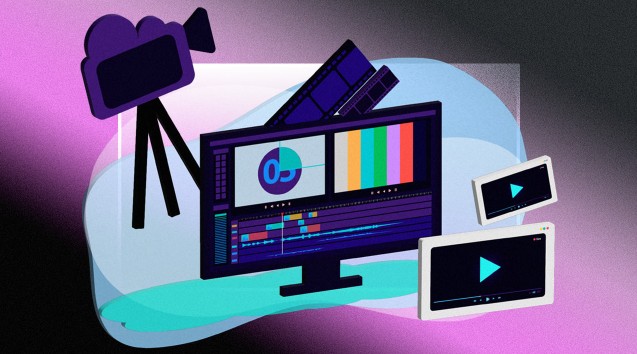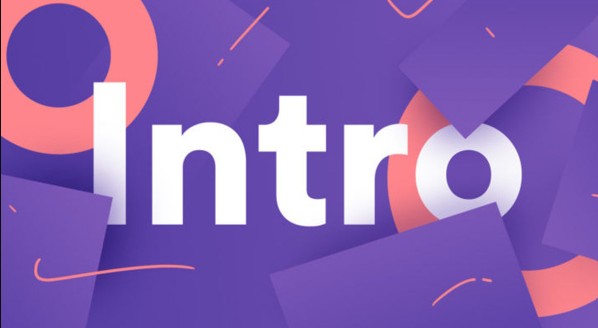Best Selling Products
Who Is An Editor? Revealing Popular And Creative Jobs In The Profession
Nội dung
- 1. What is Editor?
- 2. The Role of the Editor
- 2.1. Content Optimization
- 2.2. Check for Content Errors
- 2.3. Link Development
- 2.4. Create an Attractive Title
- 3. What Does an Editor Do?
- 3.1. Content Editor
- 3.2. Story Editor
- 3.3. Video/Film Editor
- 3.4. Photo Editor
- 4. Qualities and Skills Needed to Be an Editor
- 4.1. Creative Skills
- 4.2. Article Editing Skills
- 4.3. Grammar and Spelling Skills
- 4.4. Meticulousness and Carefulness
- 4.5. Managing Collaborator Team
- 4.6. Photo and Video Editing Skills
- 4.7. Quickly Grasp New Trends
- 4.8. Research Skills
- 4.9. Editing Tool Skills
- 4.10. Copyright Knowledge
- 5. What Are the Career Prospects for Editors?
Editors are responsible for editing and proofreading content to ensure accuracy, quality, and consistency before publishing. They work in a variety of industries, including journalism, book publishing, advertising, digital media, and creative content.

In the field of communication, content production and creativity today, Editor is no longer a strange position, on the contrary, they are the "golden hands" behind the meticulousness and professionalism of a series of products from text, videos to images. Although not appearing directly in front of the camera or being the face of the brand, editors play an extremely essential role in perfecting and enhancing the value of content.
So who exactly is an Editor, what do they do, and why is this position increasingly sought after in the digital age? Today's article from SaDesign will help you better understand the concept of Editor , and explore the most popular Editor jobs today. If you are learning about the Editor profession or are simply curious about these creative behind-the-scenes jobs, let's explore right away!
1. What is Editor?
Editors are responsible for editing and proofreading content to ensure accuracy, quality, and consistency before publishing. They work in a variety of industries, including journalism, book publishing, advertising, digital media, and creative content.
For example, in publishing, an Editor helps improve storylines and fine-tune language for readers to follow; in digital media, they work closely with content creators to create engaging, search-engine-optimized articles, videos, and images.
.png)
2. The Role of the Editor
An editor is not just an editor, but also a “powerful assistant” to optimize content to increase SEO efficiency, improve reader experience and ensure professional quality products. This role is demonstrated in many aspects, from using keywords to developing internal links, to ensure content is presented in a coherent and attractive manner.
2.1. Content Optimization
Content optimization is the process of editing and structuring your writing to ensure it is not only accessible to readers but also ranked favorably by search engines.
To achieve this, the Editor will:
Use strategic keywords: Start with keyword research, identifying keywords based on search trends and frequency. Then, keywords are “inserted” naturally into titles, meta descriptions, and paragraphs without feeling stuffed. This helps balance user experience and search algorithm requirements.
Reasonable article structure: Content is divided into clear sections using heading tags such as H1, H2, H3. This not only makes it easier for readers to follow but also improves SEO efficiency when search engines “read” the article structure correctly.
Optimize images and videos: Images and videos play an important role in conveying messages. Editors use alt text to describe images and compress files to reduce page load time. For example, when using an image to illustrate an article about “what is an editor”, the alt text is detailed and relevant, supporting image search on search engines.
2.2. Check for Content Errors
Proofreading is an important step in ensuring professional quality content.
.png)
Check for spelling, grammar, and punctuation errors: An article may contain minor errors such as misspellings or incorrect punctuation. Editors should carefully review each sentence. For example, misspelled “content” as “content” will be corrected immediately to avoid damaging the reputation.
Check for logical errors and accuracy: Not only do arguments and information need to be checked for linguistic errors, they also need to be verified with reliable sources to ensure accuracy.
Ensure consistency: Consistency in wording, writing style, and formatting helps keep content coherent. Editors maintain a consistent tone so as not to confuse readers.
2.3. Link Development
Link building is key to increasing the SEO value of your articles and improving user experience.
Internal Links: Editors often include links to other articles on the same website. For example, after reading about “what is an editor”, readers may be directed to a related article about “how to optimize SEO” for a comprehensive overview.
External Links: When using information from outside sources, links should lead to reliable sources. Editors check the reliability of the source to ensure additional information is accurate.
Anchor Text: Keyword selection for anchor text is very important. For example, let’s say you want to link to another SEO tutorial, the Editor might choose the phrase “content optimization tips” as a catchy and natural anchor text.
2.4. Create an Attractive Title
The title is the first “gateway” to attract readers, so creating an attractive title that contains keywords is extremely important.
.png)
Short and concise: Titles need to be short enough to be fully displayed on search engines while conveying the necessary information. According to research, optimal titles are usually around 50-60 characters.
Keyword optimization: Incorporating the main keyword naturally into the title makes the article easier to index by search engines. For example, “What is an Editor? 5 Skills Needed to Succeed in 2025” is both attractive and SEO optimized.
Creative, engaging: A creative title not only describes the content but also creates curiosity, for example using the words “secret” or “how to” to stimulate the reader's desire to explore.
2.5. Producing High Quality Content
High quality content is always the Editor's top goal in every content production process.
Ensure depth and comprehensiveness: The content should provide detailed information and thoroughly address the issue for the reader. A quality article should not only summarize but also analyze and explain each aspect in depth.
Collaboration with the creative team: Collaboration between editors, writers, designers and marketers helps ensure that articles are not only factually accurate but also visually appealing and reflect the brand strategy.
Formal quality: Presentation also contributes to the success of the article, with appropriate formatting, font size and spacing between paragraphs, making the article easy to read and friendly.
3. What Does an Editor Do?
Editors’ jobs are varied, including editing, proofreading, and optimizing content across a variety of platforms. Each position requires specific skills, but all require a high level of attention to detail and creativity.
3.1. Content Editor
.png)
Content Editor is responsible for managing and improving the quality of written content published across multiple media channels.
Content Quality Control: Review and edit articles to ensure language accuracy and in-depth content.
Content Strategy Development: Participate in topic planning, idea generation, market analysis and recommending novel topics that align with marketing strategy.
SEO Optimization: Understanding keyword strategy, optimizing titles, meta descriptions and article structure helps articles rank easily on search engines.
Collaborate with creative team: Work closely with copywriters, designers and marketers to ensure copy is consistent and optimized.
3.2. Story Editor
Story editors focus on perfecting literary or comic works, helping to develop the plot and language of the work.
Content Editing: Read and analyze manuscripts, making suggestions for improving story flow and phrasing. For example, when conflicts are found, the Editor will suggest solutions to maintain logic and consistency.
Ensure accuracy: Check for errors in time, location, and small details, ensuring every event and character is properly placed.
Communicating with the author: Communicate tactfully and constructively so as not to detract from the author's creative style.
Grammar and spelling editing: Ensures proper language, helping to maintain the quality of the work.
.png)
3.3. Video/Film Editor
What is a video editor? A video/film editor is an expert in editing raw footage to create a finished video or film product that effectively conveys a story.
Scene editing: Select and edit scenes to ensure a tight story flow, removing unnecessary parts.
Audio Editing: Adjust audio, remove noise, and add background music or voiceover to create the perfect viewing experience.
Add effects and color correction: Use software like Adobe Premiere, Final Cut Pro to add effects, adjust color to increase the artistic value of the product.
Collaborate with directors and producers: Work closely with stakeholders to ensure the artistic vision is accurately executed and the project's message is conveyed.
.png)
3.4. Photo Editor
“What is a Photo Editor?” is also a question that many people are interested in when pursuing this career. Photo Editor specializes in editing images to bring optimal quality to media products.
Edit images: Use tools like Adobe Photoshop or Lightroom to adjust lighting, color, contrast, and sharpness.
Image Flaw Removal: Meticulously removes dirt, smudges and unwanted blemishes.
Create visual effects: Create unique effects like exposure, background blur or color effects to express the right emotions and ideas.
Prepare photos for printing or posting: Ensure photos meet standards in size, quality and format for printing or posting on websites and media channels.
.png)
4. Qualities and Skills Needed to Be an Editor
To become a professional Editor, you not only need to understand the content but also possess diverse qualities and skills to make the work more accurate and creative.
4.1. Creative Skills
Creativity is at the heart of editing. Editors need to be able to come up with new ideas and unique approaches to telling stories and conveying messages vividly. Their creative spirit helps them find alternatives and make content stand out from the crowd.
4.2. Article Editing Skills
Editing is not just about correcting errors, but also requires the ability to sharpen the message, ensuring the article is logically structured, coherent and easy to understand. A good editor always knows how to "sharpen" the language to reach the highest level of perfection.
4.3. Grammar and Spelling Skills
A solid knowledge of grammar and spelling is the foundation of all quality content. Editors are always alert and correct grammatical errors to make each sentence accurate and professional, contributing to the credibility of the article.
4.4. Meticulousness and Carefulness
As an Editor, attention to detail is essential. Every little punctuation and spelling mistake, if left unchecked, can bring down the quality of the entire piece, so careful proofreading ensures that information is conveyed clearly.
4.5. Managing Collaborator Team
On large projects, Editors often work with a team of collaborators ranging from writers to designers. Managing and coordinating work and assigning clear tasks helps ensure that everyone completes their part effectively.
.png)
4.6. Photo and Video Editing Skills
With the current trend of multimedia content, Editors need to be proficient in photo and video editing software such as Adobe Photoshop, Lightroom, Premiere or Final Cut Pro, creating attractive media products that are compatible with many formats and platforms.
4.7. Quickly Grasp New Trends
The digital world changes every day with new trends constantly emerging. A professional Editor must always update his knowledge, technology and creative style to ensure that the content is always “hot” and suitable for modern tastes.
4.8. Research Skills
The ability to synthesize and analyze information from multiple sources will help Editors provide in-depth and reliable content. Research skills include not only finding data but also verifying and evaluating the accuracy of that information.
4.9. Editing Tool Skills
Editors need to be proficient in supporting tools such as editing software, content management systems (CMS) and SEO support tools, helping to increase productivity and optimize content according to market requirements.
4.10. Copyright Knowledge
Understanding copyright law and ethics when using materials is key to helping Editors avoid legal violations, know how to cite sources legally, and respect the creativity of others.
.png)
5. What Are the Career Prospects for Editors?
The career prospects for Editors are bright and promising, especially with the explosion of digital media platforms and the demand for high-quality content. With experience and management skills, a Content Editor can advance to positions such as Content Team Leader, Content Project Manager, or even Creative Director. Current trends such as video content, podcasts, and in-depth articles are creating a favorable environment for Editors to develop their careers.
Hopefully the information shared in this article by SaDesign has helped you get an overview of what an editor is? Don’t forget to follow so you don’t miss out on useful information!












































